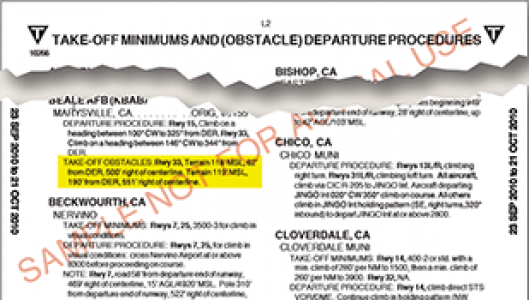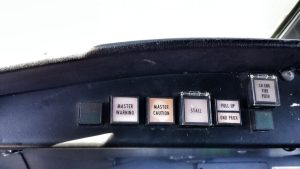ODPs place significant responsibility on pilots
Obstacle Departure Procedures (ODP) are underutilized aviation tools – possibly a result of how unfamiliar and uncomfortable many pilots are with them. If obstacles in a departure area require a climb of more than 200 feet per NM be maintained to ensure sufficient terrain separation, the Federal Aviation Administration (FAA) creates an ODP.
The Aeronautical Information Manual (AIM) advises that pilots take into consideration terrain in the surrounding area and weigh whether an ODP or visual obstacle clearance is better suited. Those piloting multi-engine aircraft must also take into account the potential of an engine loss and the correlating loss of thrust. ATC may assign radar vectors or even a separate departure route, however, a specific clearance for an ODP is not required. It is worth noting though that no obstacle clearance is actually ensured until ATC begin dictating radar vectors. To make matters more complex ODPs are almost always written out and shared in a text format, rather than depicted via graphics. Their description can be found in both the FAA (AeroNav, formerly known as NACO) chart book and Jeppesen’s airport information page. A thorough review of any ODP description in its entirety prior to employing it is important.
ODPs are often overlooked, yet provide a valid means of departure in IMC conditions. Still, there are several reasons why individuals may be hesitant to utilize them. The increased climb gradient requirement alongside a lack of procedural familiarity can be intimidating to pilots. This is why it is important pilots continue to study and review the numerous tools available to them, including ODPs.
RELATED READING
RELATED CTS TRAINING










